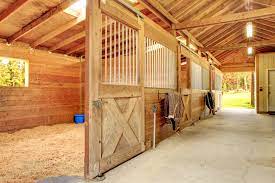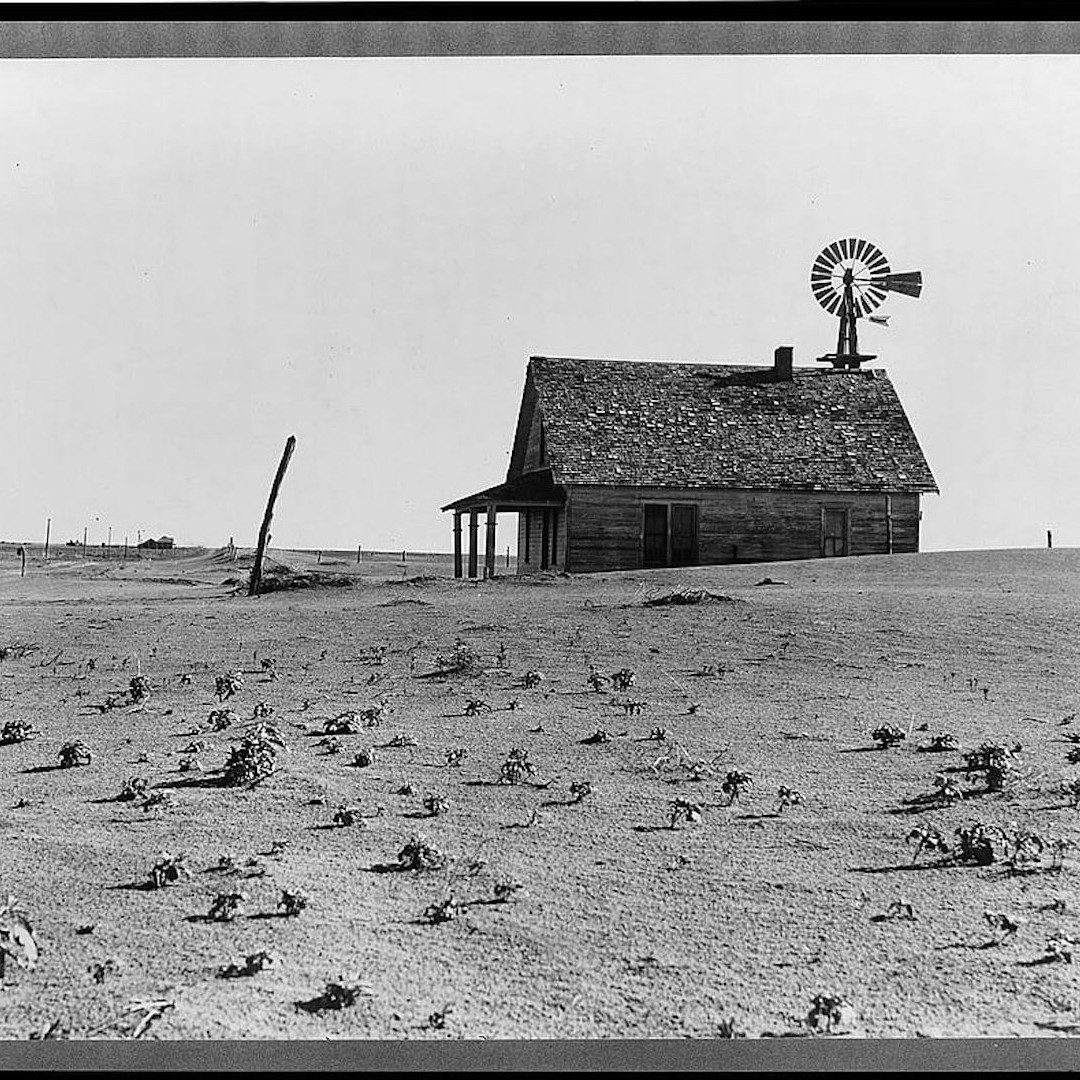To keep dust down in a dirt floor barn, use moisture control methods and regular cleaning to reduce dust particles. Dust can cause health issues and can be detrimental to animals’ respiratory systems, so it is important to take preventive measures to minimize dust in the barn.
Additionally, implementing proper ventilation, maintaining a consistent humidity level, and keeping the barn well-maintained can further reduce dust accumulation. By following these practices, you can create a healthier and more comfortable environment for both livestock and workers in the barn.

Importance Of Dust Management In Dirt Floor Barns
Importance of Dust Management in Dirt Floor Barns
Dust management is crucial in dirt floor barns as it directly impacts the health and productivity of livestock. Dust accumulation in barns can lead to respiratory issues, eye irritations, and reduced feed efficiency in animals. Additionally, excessive dust can also cause barn fires and pose a risk to the structural integrity of the building.
Factors contributing to dust accumulation in dirt floor barns:
- Poor ventilation: Inadequate airflow allows dust to settle and accumulate in the barn.
- Dry bedding material: Dust is often formed from dry and loose bedding material such as straw or sawdust.
- Inadequate maintenance: Neglecting regular barn cleaning and maintenance can lead to excessive dust build-up.
Introduction to the concept of dust management techniques in barns:
Implementing effective dust management techniques can significantly improve air quality and reduce the negative impacts of dust on both animals and infrastructure. Various approaches can be adopted, including:
- Dampening the floor and bedding material to minimize dust particles.
- Installing proper ventilation systems to promote air circulation and dust removal.
- Regularly soaking and sweeping barn floors to control dust accumulation.
- Using dust suppressants or additives to reduce dust formation.
Identifying And Addressing Dust Sources In Dirt Floor Barns
Identifying and addressing dust sources in dirt floor barns is crucial for maintaining a clean and healthy environment. Common sources of dust in these barns include feed and bedding materials, manure, and urine. Strategies for minimizing dust from feed and bedding materials include storing them in sealed containers, wetting them before use, and using dust-free alternatives. Techniques such as regular cleaning, proper ventilation, and keeping manure and urine areas dry can help control dust from manure and urine. Additionally, using dust control products, such as water-based dust suppressants, can help reduce airborne dust particles. Regular inspection and maintenance of the barn floor can also prevent dust accumulation. By implementing these strategies and techniques, you can effectively keep dust down in a dirt floor barn and create a better environment for both animals and humans.
Implementing Proper Ventilation Systems
Proper ventilation is crucial in keeping dust levels down in a dirt floor barn. Dust can be harmful to both animals and humans, so taking the necessary steps to minimize its presence is essential. Understanding the role of ventilation in dust control is the first step towards implementing an effective system.
Choosing the right ventilation system for your barn is key. Factors such as barn size, layout, and the number of animals housed should be considered. A well-designed system will promote airflow and prevent the accumulation of dust particles. Regular maintenance is also vital to ensure optimal performance and maximum dust control. Cleaning and replacing filters, checking airflow rates, and addressing any issues promptly will help maintain the system’s efficiency.
Additionally, optimizing the barn’s ventilation system can further aid in dust reduction. Strategic placement of vents, fans, and ductwork can help direct airflows effectively and prevent dust buildup in problem areas. Ensuring proper sealing of gaps and cracks will also help prevent the entry of dust and other contaminants into the barn.
Implementing a proper ventilation system and following maintenance and optimization tips will significantly reduce dust levels in your dirt floor barn, creating a healthier and safer environment for both animals and workers.
Organic Dust Control Methods
Organic dust control methods provide effective solutions for keeping dust down in a dirt floor barn. These methods utilize natural and organic materials that are safe for both humans and animals. A variety of application methods can be used to distribute organic dust control agents throughout the barn, such as mixing them with water and spraying them onto the floor or using a dust control machine to disperse them evenly.
One of the benefits of organic dust control methods is their versatility. They can be used in various areas of the barn, including livestock pens, feed storage areas, and aisleways. Additionally, these methods are environmentally friendly and can help create a healthier living environment for both animals and humans by reducing respiratory irritants.
However, it is important to note that organic dust control methods may have limitations. They may need to be reapplied periodically as they may degrade over time or be affected by weather conditions. It is also important to follow the manufacturer’s instructions for proper application and dosage to ensure maximum effectiveness.
Mechanical Dust Control Techniques
When it comes to keeping dust down in a dirt floor barn, mechanical dust control techniques can be highly effective. These techniques involve the use of specialized equipment to both control and suppress dust particles in barns and agricultural environments.
Mechanical dust control equipment includes systems such as dust collectors, air scrubbers, and ventilation fans. These devices are designed to capture and remove dust particles from the air, preventing them from settling on surfaces and becoming airborne again. By eliminating dust at the source, these systems can significantly reduce dust levels in a barn.
Proper installation and maintenance of mechanical dust control systems are crucial for their effectiveness. It is important to consult with professionals to determine the right equipment for your barn’s specific needs and to ensure proper installation. Regular maintenance, including cleaning and replacing filters, is essential to ensure optimal performance of the systems and to prevent clogs or malfunctions.
Proper utilization of mechanical methods for dust suppression:
In addition to installing the appropriate equipment, it is essential to utilize mechanical methods for dust suppression correctly. This can include adjusting ventilation systems to optimize airflow and using the equipment in conjunction with other dust control measures, such as regular cleaning and proper manure management. By combining mechanical methods with good management practices, barn owners can effectively keep dust levels under control.
Best Practices For Dust Control In Dirt Floor Barns
Regular cleaning and maintenance procedures are essential for effective dust control in dirt floor barns. Dust can accumulate quickly in these types of structures, leading to health hazards and a dirty working environment. To keep dust levels down, sweeping and mopping the floors on a regular basis is crucial. This helps to remove loose dirt and debris that can contribute to dust production. Additionally, proper ventilation is important for reducing dust accumulation. Opening windows or using fans can help to circulate fresh air and disperse dust particles.
Creating strategic dust barriers and containment areas can also help to minimize dust spread in a dirt floor barn. This can be achieved by using curtains, screens, or barriers made of materials that effectively trap dust particles. By creating designated areas where dust is contained, it becomes easier to clean and manage. Regularly inspecting these barriers and ensuring they are intact is crucial for maintaining their effectiveness.
Another important aspect of dust control is implementing training protocols for staff members involved in dust control. Providing education and guidance on proper cleaning techniques, personal protective equipment (PPE) use, and identifying potential dust sources can help minimize dust production and exposure. By ensuring everyone is aware of the importance of dust control and equipped with the necessary knowledge and tools, a dirt floor barn can be kept relatively dust-free.
Monitoring And Evaluation Of Dust Management Efforts
Establishing metrics to measure the effectiveness of dust control is crucial for maintaining a healthy and productive environment in a dirt floor barn. By implementing consistent and reliable monitoring mechanisms, barn owners and managers can effectively identify areas that require improvement and take necessary steps to address dust-related issues.
Periodic evaluation and adjustment of dust management techniques play a vital role in ensuring long-term success. This involves regularly assessing the performance of implemented measures and making necessary modifications to enhance effectiveness. By closely monitoring dust levels and evaluating the impact of specific control methods, barn owners can continually refine their approach.
| Feedback Sources | Actionable Insights |
|---|---|
| Observations of livestock behavior | Indicators of discomfort and respiratory issues |
| Physical examinations | Assessing animal health and respiratory function |
| Monitoring production metrics | Identifying any declines in productivity and growth rates |
Frequently Asked Questions For How To Keep Dust Down In A Dirt Floor Barn
How Do You Keep Dust Down In A Dirt Floor Horse Barn?
To keep dust down in a dirt floor horse barn, you can use several strategies. Use rubber mats or gravel to create a firm base, sprinkle the floor with water to suppress dust, provide good ventilation to circulate air, and regularly clean the barn to reduce dust buildup.
How Do I Keep The Dust Down In My Barn?
To keep the dust down in your barn, follow these tips: 1. Regularly sweep and clean the area to remove excess dust. 2. Use mats or rubber flooring to trap dust and dirt. 3. Control moisture levels to prevent dust from becoming airborne.
4. Install proper ventilation to improve air circulation. 5. Consider using dust control products or sprays for added effectiveness.
What Can I Put On Dirt To Keep Dust Down?
To keep dust down on dirt, you can use water sprinklers or spray water on the surface regularly. Another effective option is to apply a dust suppressant, such as a chemical solution or natural products like lignin or calcium chloride.
These solutions can help control dust for extended periods.
What Can Be Put On Dirt Floor Of Barn?
To cover the dirt floor of a barn, options include gravel, concrete, rubber mats, or compacted dirt.
Conclusion
To minimize dust in a dirt floor barn, start by using proper animal bedding and regularly cleaning it. Additionally, ensure proper ventilation and airflow to prevent dust accumulation. Implementing a regular watering schedule and using dust suppressants can also go a long way in maintaining a dust-free environment.
By following these steps, you can create a healthier and more comfortable space for both animals and humans in your barn.




